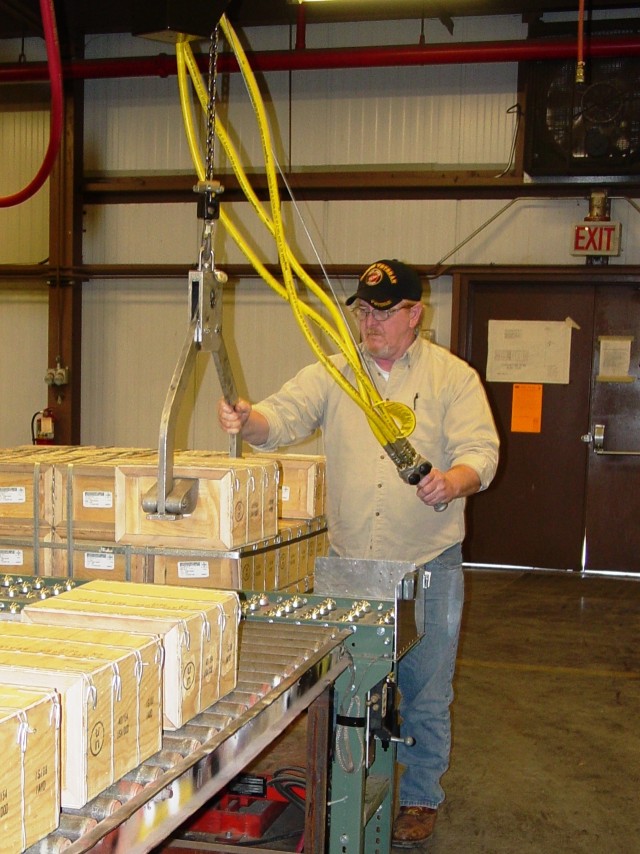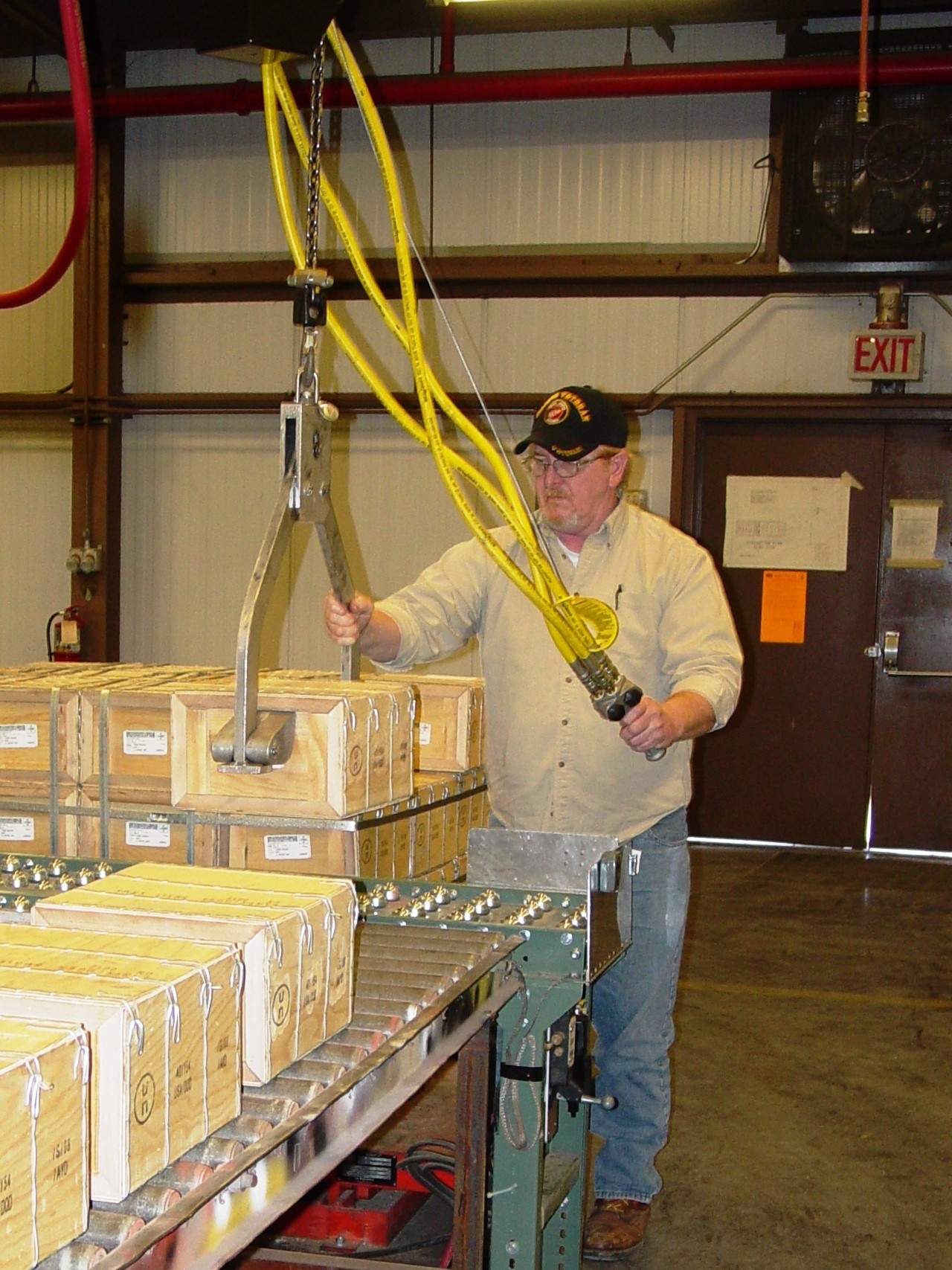CRANE, Ind. - As any organization strives for continuous improvement, there are changes made to improve efficiency and generate cost avoidance, and then there are changes made to improve the overall quality of life and work for employees. When a Lean Six Sigma project is able to do both, it is considered a big win for everyone involved.
The Crane Army Ammunition Activity employees working in the Ammunition Surveillance Workshop were able to score that type of big win when their LSS Blackbelt Project indentified not only a more efficient way to do inspections, but developed a healthy way to do their work.
It improved an inspection line designed to allow employees to inspect small arms ammunition before it goes to the customer and verify whether or not ammunition is safe to store at the activity. The linear method used to carry out the inspections contributed to schedule slippage.
"Some of the issues the Lean Six Sigma team identified in the Reduce Variation in Small Arms Ammunition Inspections project had to do with lifting and turning motions that inspectors and material handlers had to make while they were doing inspections on explosive materials," Process Improvement Specialist Justin Cowell said.
Cowell explained there was an excessive variation in the small arms ammunition inspection process between the inspectors. This variation was leading to a backlog of periodic and receipt inspections which resulted in constant schedule changes, a large number of priority last minute inspections and excess overtime.
By focusing on how the inspections were physically being carried out, the LSS team was able to suggest improvements that greatly improved inspection efficiency. Logistics Management Specialist Mike Jewell said, "We were trying to improve the speed in which the inspection process is done. One of the problems we hit on was the line layout. We went from a linear to an oval shape. Instead of walking to the items, you were bringing the items to the inspector."
Another area of the process improved by the team had to do with the lifting and turning motions that were being done when the inspector and/or material handlers were moving the material to be inspected from the "linear" inspection line onto an inspection table located behind them. The oval or racetrack design eliminated unnecessary movement. By adding roller ball transfer tables in front of the inspector, the team was able to eliminate the lifting and turning motion by allowing the inspector to pull the material toward themselves onto the inspection table.
To further minimize the lifting and turning motions, the team examined how the boxes that were in excess of 75 pounds were being moved onto the line. The reverse of this would occur once the material had been inspected and was being re-palletized. By adding a portable jib crane to the work cell, the lifting function could be performed by a pneumatic hoist and the material handler could move the material unassisted by another person.
The adjustments to the process were simple, but made a marked improvement in how well the line could do its inspections. But Cowell said the true benefit of the LSS event is not only in a dollar amount, but in the better ergonomics and improved work environment for those on the line. It was an improvement that only could have occurred with the involvement of all the employees on the team.
Jewell said the team felt good that they were able to accomplish all they did on the inspection line. He said. "The wage grade, the (general schedule) and the (wage supervisors) all worked together very well and were very open. It was impressive that we were able to accomplish all that we did."
CAAA was established in Oct. 1977 and is a tenant of the Navy Region Midwest, Naval Support Activity Crane. The Army activity maintains ordnance professionals and infrastructure to receive, store, ship, produce, renovate and demilitarize conventional ammunition, missiles and related components.


Social Sharing